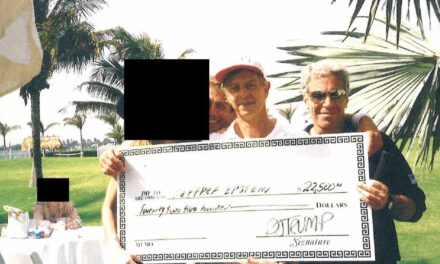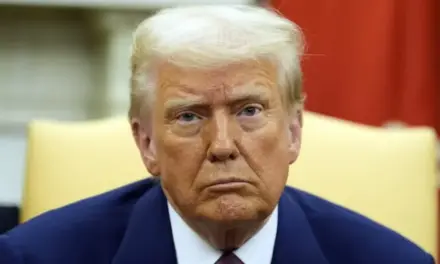It’s a fool’s errand to argue with Donald Trump about historical facts, but I’m going to do it anyway. Earlier in May, Trump decided to goof around a bit.
President Trump said Thursday that he would rename May 8, widely known as V-E Day, as “Victory Day for World War II,” so that the United States could celebrate its achievements in that conflict.
“Today, our nation proudly commemorates the 80th anniversary of the Allied Powers’ triumph over national socialism and fascism, and the end of World War II in Europe — one of the most epic victories for forces of freedom in the history of the world,” Mr. Trump said in the proclamation posted on the White House website.
Now, you know, and I know, that when the Nazis surrendered in World War Two, that didn’t end the war.
We call May 8 “V-E Day” or “Victory in Europe Day” because it was only a victory in the European theater. In the United Kingdom, they celebrate “V-J Day” or “Victory over Japan Day” on August 15, which is when (less than a week after an atomic bomb fell in Nagasaki) Japan announced their surrender. In the United States, we celebrate V-J Day on September 2, which is the day (in our time zone) that the surrender document was actually signed.
Is all that confusing? Maybe. But, in any case, May 8 is not the anniversary of victory in World War Two so it doesn’t make sense to call it “Victory Day for World War II.”
And it gets worse.
In his post last week, Mr. Trump referenced the celebrations by America’s allies to mark V-E Day, for “Victory in Europe,” this year. “We did more than any other” country, he said, to achieve an Allied victory in World War II, a conflict that devastated most of Europe and huge parts of Asia.
Here I am going to reference a document that was created for the First Quebec Conference, “a highly secret military conference held during World War II by the governments of the United Kingdom, Canada, and the United States” in Quebec City on August 17–24, 1943. On the first day of the conference, the U.S. and U.K. completed the capture of Sicily.
The document is a memorandum prepared by the Executive of the President’s Soviet Protocol Committee, Major General J.H. Burns, for FDR’s Special Assistant Harry Hopkins. The topic is how to deal with the Soviet Union both in the present and in the coming post-war environment. Burns wrote:
”Russia’s position in War II is in marked contrast with that which she occupied in War I. She collapsed before the termination of War I and had no effect whatsoever in the final defeat of Germany, which was accomplished by the Allies without her assistance. In War II Russia occupies a dominant position and is the decisive factor looking toward the defeat of the Axis in Europe. While in Sicily the forces of Great Britain and the United States are being opposed by 2 German divisions, the Russian front is receiving attention of approximately 200 German divisions. Whenever the Allies open a second front on the continent, it will be decidedly a secondary front to that of Russia; theirs will continue to be the main effort. Without Russia in the war, the Axis cannot be defeated in Europe, and the position of the United Nations becomes precarious.”
In that quote, the “United Nations” means the western allies, as the organization now known as the United Nations did not yet exist. The point was that despite the many obvious shortcomings of Josef Stalin’s USSR, they deserved Western support because they were doing “more than any other country” in defeating the Germans. That was true in August 1943 and it would remain true for the remainder of the war.
That certainly doesn’t mean that the United States shouldn’t commemorate its sacrifices and victories in World War Two. It just means that the Soviets played the “dominant” role and were the “decisive factor” in the Nazis’ defeat. You could say the same about the United States when discussing Japan’s defeat.
If Trump wants a day to celebrate “Victory Day for World War II,” it should be September 2, rather than May 8.
Then there is the military parade that Trump has scheduled for his 79th birthday on June 14th to commemorate the U.S. Army’s 250th anniversary. The Washington Post estimates it will cost between $25 and $45 million. This, at a time when Trump is making massive cuts to the Department of Veterans Affairs.
About 3,000 service members will be housed on unused floors of a General Services Administration building and 2,000 in an Agriculture Department building…Most participating service members will arrive a couple of days before the parade…and leave June 16.
Vehicles will arrive in the region by rail and be trucked into the city…Participating aircraft will fly in.
Overall, 150 vehicles, 50 aircraft and 6,600 soldiers are expected to take part in the festivities, the Army has announced. There will be a fireworks display and a day-long festival on the National Mall with military demonstrations, musical performances and a fitness competition.
The most lasting legacy of this display will be damage to the roads of our nation’s capital.






